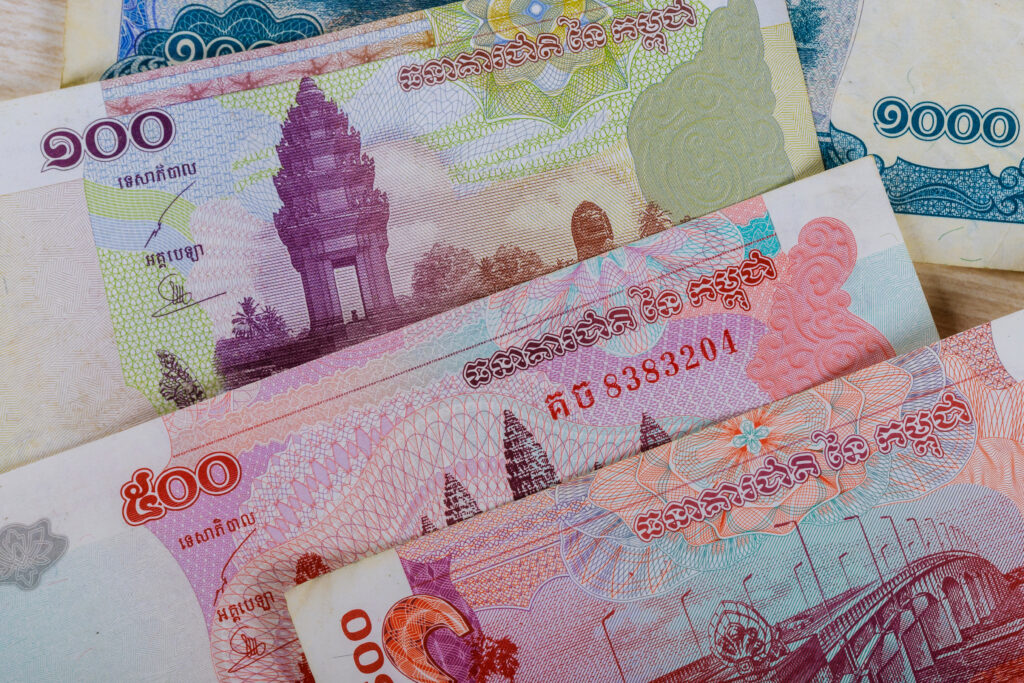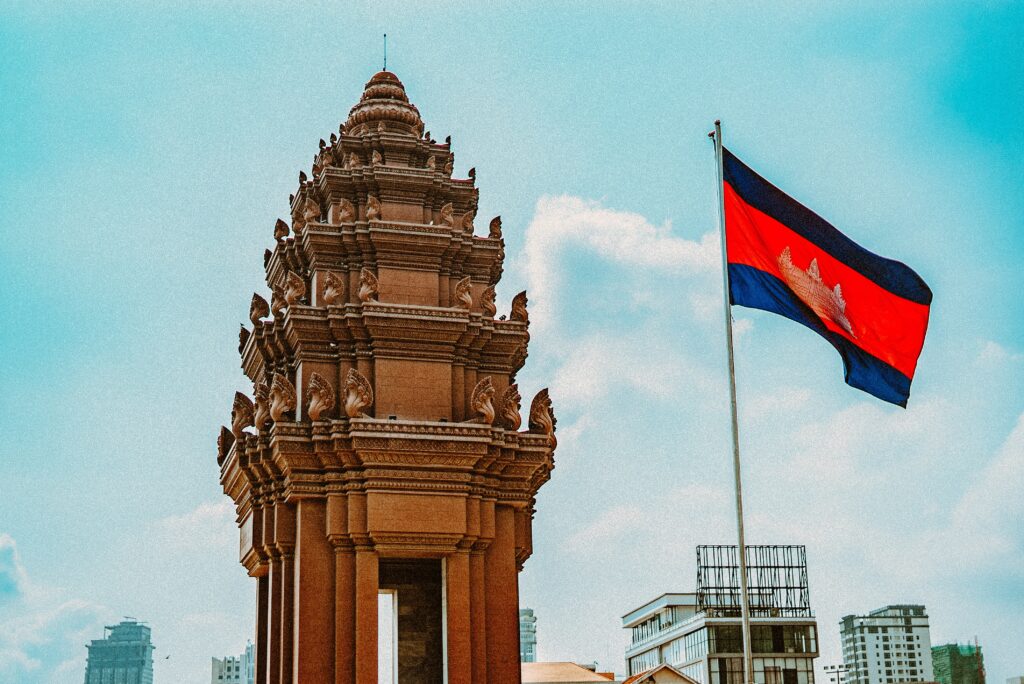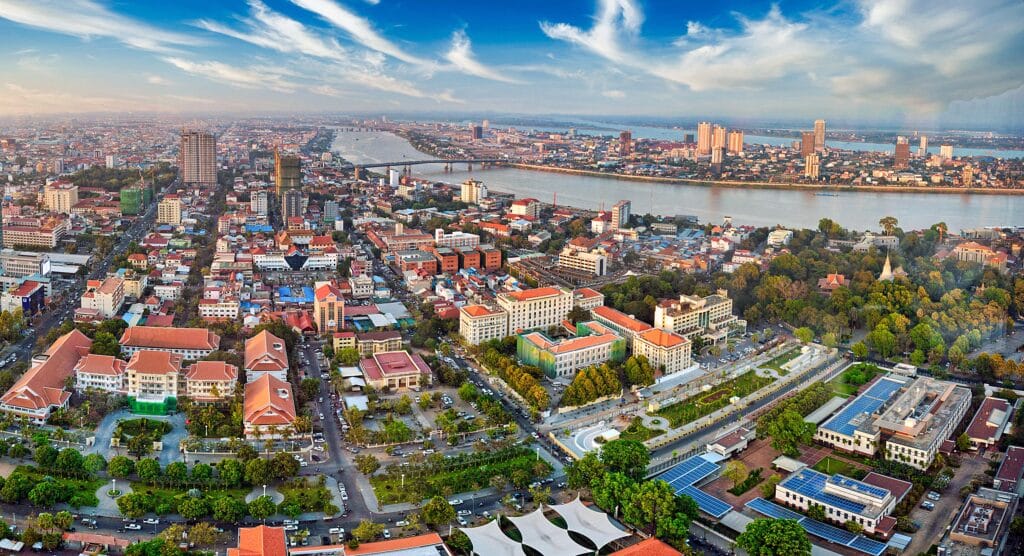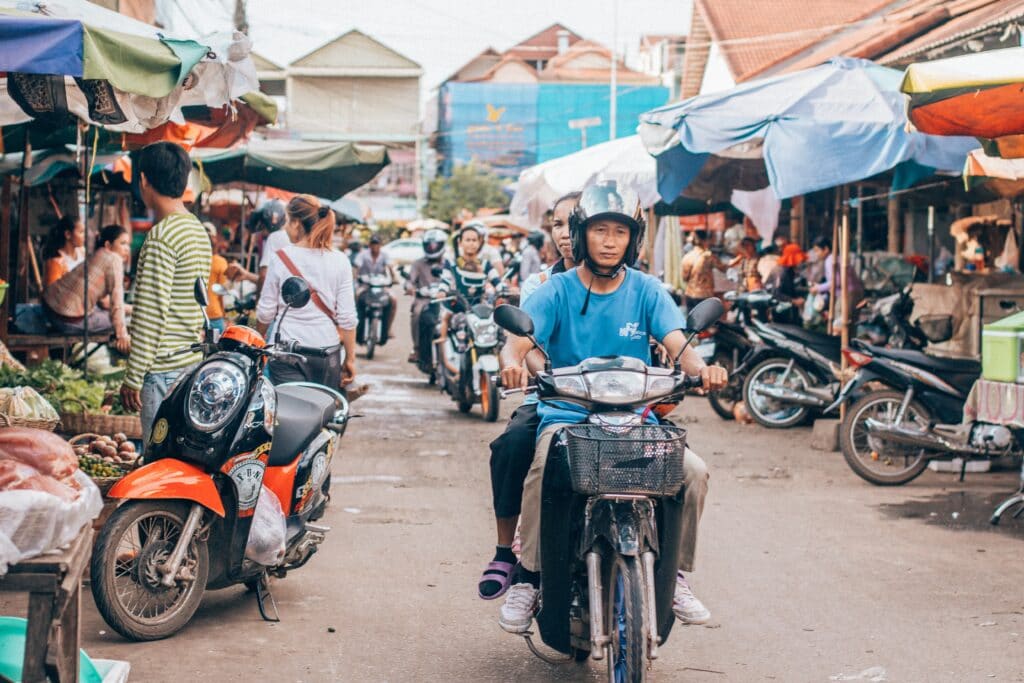Last updated on March 11th, 2024 at 03:03 pm
Are you traveling to Cambodia or sending money home? You might need to turn your USD, euros, pounds, or other currency into Cambodian riel.
Are you only looking for the current riel to dollar (or dollar to riel) exchange rate? Here’s today’s rate with Remitly.
Learn more about Cambodian riel rates, facts, and tips in this guide—whether you send money to Southeast Asia or plan to visit soon.

The overview of Cambodian riel
The official currency of Cambodia is the Cambodian riel, and its currency code is KHR (៛). Its sub-units are the sen (one-hundredth of a riel) and the kak (one-tenth of a riel). The coins in circulation are in the following denominations:
- 50 riels, 100 riels
- 200 riels
- 500 riels
Also in circulation are banknotes of:
- 50 riels
- 100 riels
- 500 riels
- 1,000 riels
- 2,000 riels
- 5,000 riels
- 10,000 riels
- 15,000 riels
- 20,000 riels
- 50,000 riels

5 facts about the Cambodian riel
1. Riel notes showcase Cambodia’s rich history.
From the smallest bill to the largest, each Cambodian riel note showcases a different Cambodian landmark or cultural icon. Many notes feature Cambodian cultural and historical sites and architecture on one side and a cultural icon or member of the royal family on the other.
The smallest note (50 riels) features the temple Banteay Srei on one side and the Gate of Tek Thla on the other.
The largest note (50,000 riels) features King Norodom Sihanouk on one side and the Bakong Temple on the other.
The 20,000 riel note features one of Cambodia’s most popular landmarks, Angkor Wat.
2. There have been two different currencies used in Cambodia.
While the riel is the official currency of Cambodia, there have been two distinct riels in the country since independence from France.
The first riel was issued between 1953 and May 1975.
The country had no monetary system during the period of political and social strife of the Cambodian Civil War and the Khmer Rouge regime, from 1975 to 1980.
The second, and current, riel has been in the issue since March 1980. Since the 1990s, Cambodians have used the riel alongside the U.S. dollar.
3. Cambodians usually don’t use coins.
Cambodia’s rich history also extends to its historical use of coins. Once prized for their artistry, craftsmanship, and use of precious materials, the modern Cambodian economy is primarily based on banknotes. While coins are still in circulation, they are rarely used. Instead, most of the currency is printed on bills.
After years of civil war and the abolishment of money during the Khmer Rouge regime, Cambodia’s economy could no longer support coins as currency and people lost the habit of using them.

4. The U.S. dollar is common and in circulation in Cambodia.
While the official currency of Cambodia is the riel (KHR), the country also widely uses the U.S. dollar. So much so, in fact, that many of the country’s ATM machines allow for withdrawals in USD. Experts estimate that the dollar accounts for 83% of the total transactions and more than 90% of banking deposits.
Foreign currency is more commonly used in transactions in tourist and urban areas. Businesses are likely to list prices in USD. In rural areas, where the use of riel is more common, it might be hard to break a $20 bill.
Cambodian ATMs dispense both USD and Cambodian riels, but foreign travelers may only be able to draw from their foreign accounts in USD. Double-check before you travel to Cambodia.
5. The riel has a relatively fixed USD exchange rate.
The reintroduction of the riel in 1980 saw a fixed exchange rate with the U.S. dollar, setting the value at 4 riels to $1. Since then, the relative values of the two currencies have diverged. The KHR is a free-floating currency but has lost a large degree of value against other major currencies in recent decades. While the official exchange rate may change, it is common now to see exchange rates of 4,000 KHR to 1 USD when buying products from small vendors.

More about Cambodia
Cambodia is a country in Southeast Asia bordering Thailand, Laos, and Vietnam. The country is largely rural (with over 75% of the population living in rural areas), but the influences of many Asian cultures alongside those of France and the United States can be seen throughout the country and its capital, Phnom Penh.
For 2,000 years, Cambodia’s civilization absorbed influences from India and China due to trade on the Mekong, transferring them to other Southeast Asian civilizations in the process. The country is now known for its massive temple complexes built during the Khmer empire (12th century), such as Angkor Wat and Kayon.
Cambodia became a French colony in 1863 and experienced upheaval and turmoil in the 20th century as a result of Japanese occupation during World War II, post-war independence, and political instability.
Between 1975 and 1979, the country was devastated by the reign of the Khmer Rouge. Cambodia began the process of political and social recovery during a period under a Vietnamese-backed regime from 1979 to 1989. In the 1990s, Cambodia regained its political autonomy, reestablished a constitutional government, and has since experienced steady economic growth and prosperity.
The main religion in the country is Buddhism, with notable Muslim and Christian minority populations.
